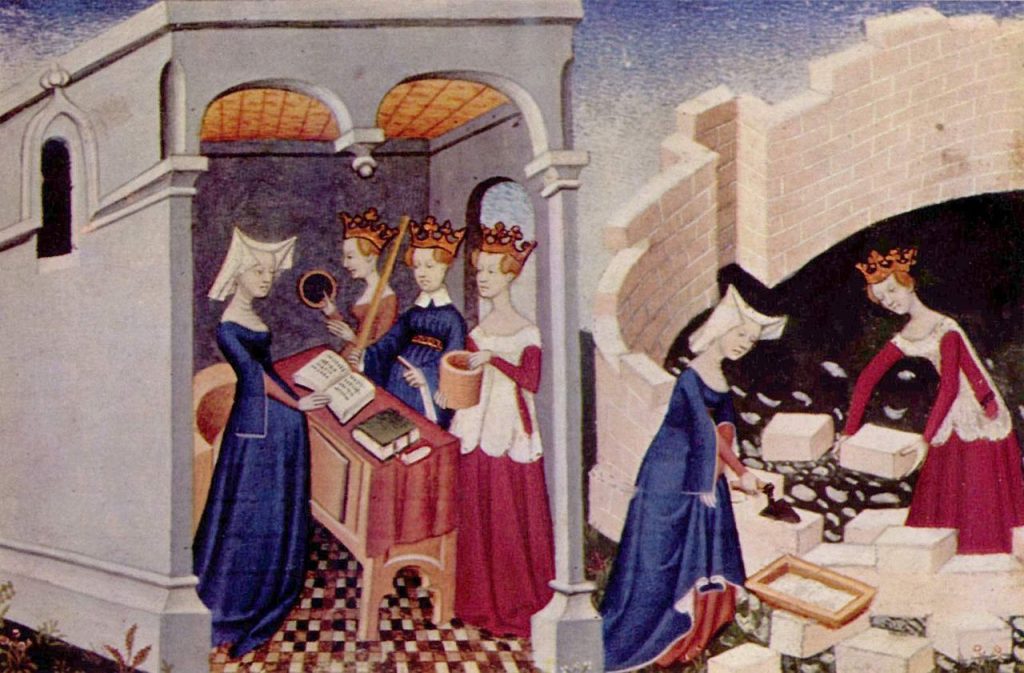The distinction between “artist” and “artisan” has deep historical and gendered implications. In classical antiquity, women, like men, often participated in workshops as artisans, producing ceramics, textiles, and other works that combined utility with beauty. During the Middle Ages, women continued to work in guilds and workshops, contributing to architecture, manuscript illumination, and other crafts. Christine de Pizan, one of the first women writers to openly defend women’s intellectual and creative capacities, reflected in La Cité des dames (1405) on women’s roles in construction and other collective enterprises, making visible their contribution to large civic and artistic projects.
However, with the Renaissance, a radical cultural shift occurred. Art became separated from craft, and the figure of the “artist” was elevated to that of a near-divine “genius,” endowed with unique inspiration and creativity. This conceptual division marginalized women, confining them to the realm of “crafts”—textiles, ceramics, decorative arts—while reserving the status of “art” for male painters, sculptors, and architects. Women’s creative work was devalued, and their names were erased from canonical histories of art. Modern historiography has continued to reinforce this invisibility, often denying women recognition as creators.
Yet questions remain: what if the prehistoric cave paintings, traditionally attributed to male hunters, had in fact been painted by women? Increasing numbers of anthropological and archaeological studies suggest that women may indeed have played a central role in early artistic expression. Such hypotheses challenge centuries of bias and expand our understanding of women’s contributions.
Centuries later, modern movements such as the Bauhaus attempted to reunite art and craft, creating new spaces for women’s participation. While the Bauhaus still imposed gender restrictions, it opened possibilities for women to innovate in design, weaving, and architecture. Today, feminist scholarship continues to recover women’s artistic legacies, restoring their rightful place in history.
Serra Húnter Fellow of Sociology at Universitat Rovira i Virgili.
Former DAAD-Gastprofessorin at Julius-Maximilians-Universität Würzburg


